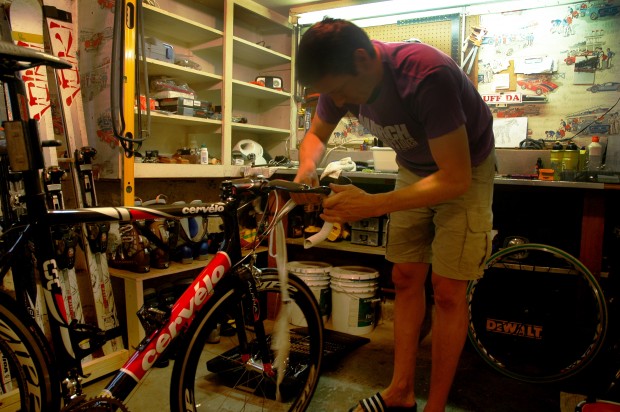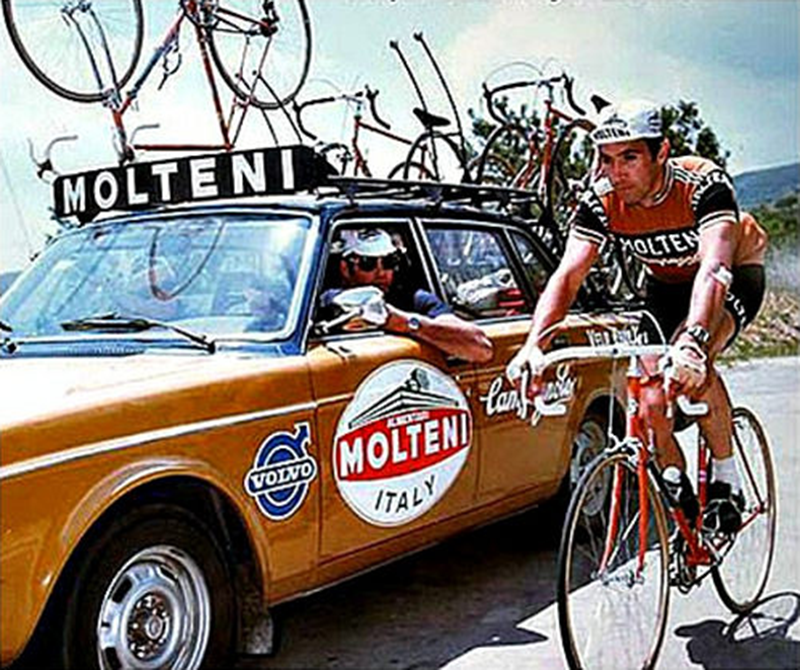Le Mecanicien

Each of us remembers how they became a Velominatus. For me, it was at Grimpeur Wielersport, in Zevenaar, The Netherlands. Its the perfect place: a small shop, on a small street, in a small town, in a small country, run by a Giant of the Sport, Herman van Meegen. I haven’t been back in years, not since my mentor and original owner was forced to retire due to a nagging back injury.
Despite it’s diminutive appearance, inside this small shop existed a world vast beyond my wildest imagination. The owner spoke with the soft ‘G’ – typical of the Dutch dialect in the region. Former head mechanic at Helvetia – La Suisse, and later for Team 7-Eleven, he had previously wielded a wrench at the world’s major events including Le Tour before opening this shop. He knew everyone. Pros strolled into his shop on a regular basis. Imagine the awe of a thirteen-year-old Velominatus Novus as Erik Breukink wandered into the shop and dallied about for a bit.
But it was the tales and experience from many years on the Pro circuit that made those visits to special to me. He explained in detail the way Steve Bauer preferred to ride a smaller frame than his contemporaries or how Pascal Richard liked the tension of the spokes “just so” as he laced a set of wheels for my dad. He showed me how he filed out the holes in the hub flange to cradle the spokes better and reduce the chance of breaking one. He built wheels on a truing stand he built himself and to which he affixed a micrometer. He told me that a perfectly true wheel will never go out of true, not even on the cobbles. “Maar het moet werkelijk perfect zijn.” But it has to be absolutely perfect. Sounds like something you need a custom truing stand and micrometer for. (That bike is now something like 20 years old, and has never seen a spoke wrench; the wheels are still perfectly true.)
He was personal friends with Eddy Merckx and picked up a frame my dad had ordered after dinner with The Man at the factory in Belgium. A prototype Campagnolo saddle with titanium rails and air bladder that never made it to production somehow found its way atop my dad’s seat post. I can’t imagine how his insides churned as my dad insisted on having a set of Scott Drop-Ins installed on that bike. He never uttered a word about it, opting instead to teach me how to seamlessly splice two rolls of bar tape together to accommodate the long bars – a skill he picked up wrapping the bars of riders who wanted double-wrapped bars on the tops but not the drops at Paris-Roubaix. He taught me to cut my cables short and solder them before cutting for the perfect, sleek finishing touch. He taught me how to “feel” a bolt to get it just the right amount of tight – where it holds but the soft aluminum doesn’t strip. He taught me to trim soda cans and tuck them in between the bars and stem of a handlebar that persistently slips. But most importantly, he showed me the intricate beauty of our machines.
He also stocked a backpack called the “Body Bag” which I always felt could have used a more sensible name and whose marketers perhaps missed a nuance in the language.
Apart from his poor choice in backpacks, this was a man who understood the finer things about bicycles, and I’m grateful he took the time to teach me even a tiny little bit of what he knew.
So, I leave you today with this question: if you could ask a pro bike mechanic – perhaps even one on the ProTour circuit – one, single question, what would it be?

